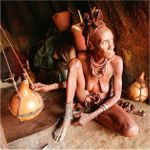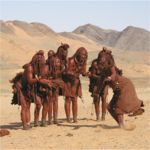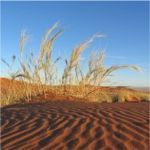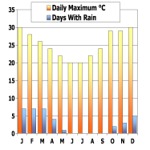Over half of the population of Namibia belong to the Ovambo tribe, who occupy the northern part of the country.
Other
ethnic groups include the Kavango, Herero, Himba, Damara, Nama,
Caprivian, San (or Bushman), Baster and Tswana. The Tswanas
are the smallest ethnic group, with only 0.5% of the
population.
The minority white population are
mostly of Afrikaan, German, British or Portuguese descent, and
make up nearly 7% of the total population.
Over 80% of the population are Christian, many of whom are Lutheran. The remaining 20% follow indigenous religions.
Languages
English
is the official language of Namibia, although it is only the
first language of a small percentage of the population, about
7%.
Afrikaans is the
most widely spoken first language for most Namibians, and around
30% of the population also speak German.
Different tribes
throughout the country speak either a Bantu dialect (including
Owambo, Caprivian and Herero) or a Khoisan dialect (including
Nama, Damara and San). The Khoisan dialects are characterised by a
'clicking' sound.
A few useful phrases to know in Afrikaans could be:
-
Good morning! - Goeie more!
-
How's it going? - Hoe gaan dit?
-
Great/Wonderful - Lekker
-
Please - Asseblief
-
Thanks - Dankie
-
Goodbye - Totsien
Namibia is not a difficult place to travel in, and whilst there is a remoteness and space which it is hard to find elsewhere, the 2 biggest headaches for most travelers will be the vast distances and unforgiving desert heat.
Much of Namibia is part of the great dry deserts of the Namib, which runs along the entire western coastline, and the Kalahari in the east.
Contrasting with these huge deserts is the sub tropical rainforest area of the far north-east around the Caprivi Strip, and the inland plateau of central Namibia is characterized by mountains and rocky outcrops.Because of these wide geographic variations, the climatic conditions differ immensely as you travel through Namibia.
Windhoek
The central area around Windhoek is generally cooler, partly due to its elevation at just over 1,600m.The rainy season is January to March, and is accompanied by violent thunderstorms and heavy downpours. Average Summer temperatures are around 30°C, but coupled with the high humidity levels Summer in the capital city can be almost unbearable.The Winter months are more pleasant and comfortable.




No comments:
Post a Comment